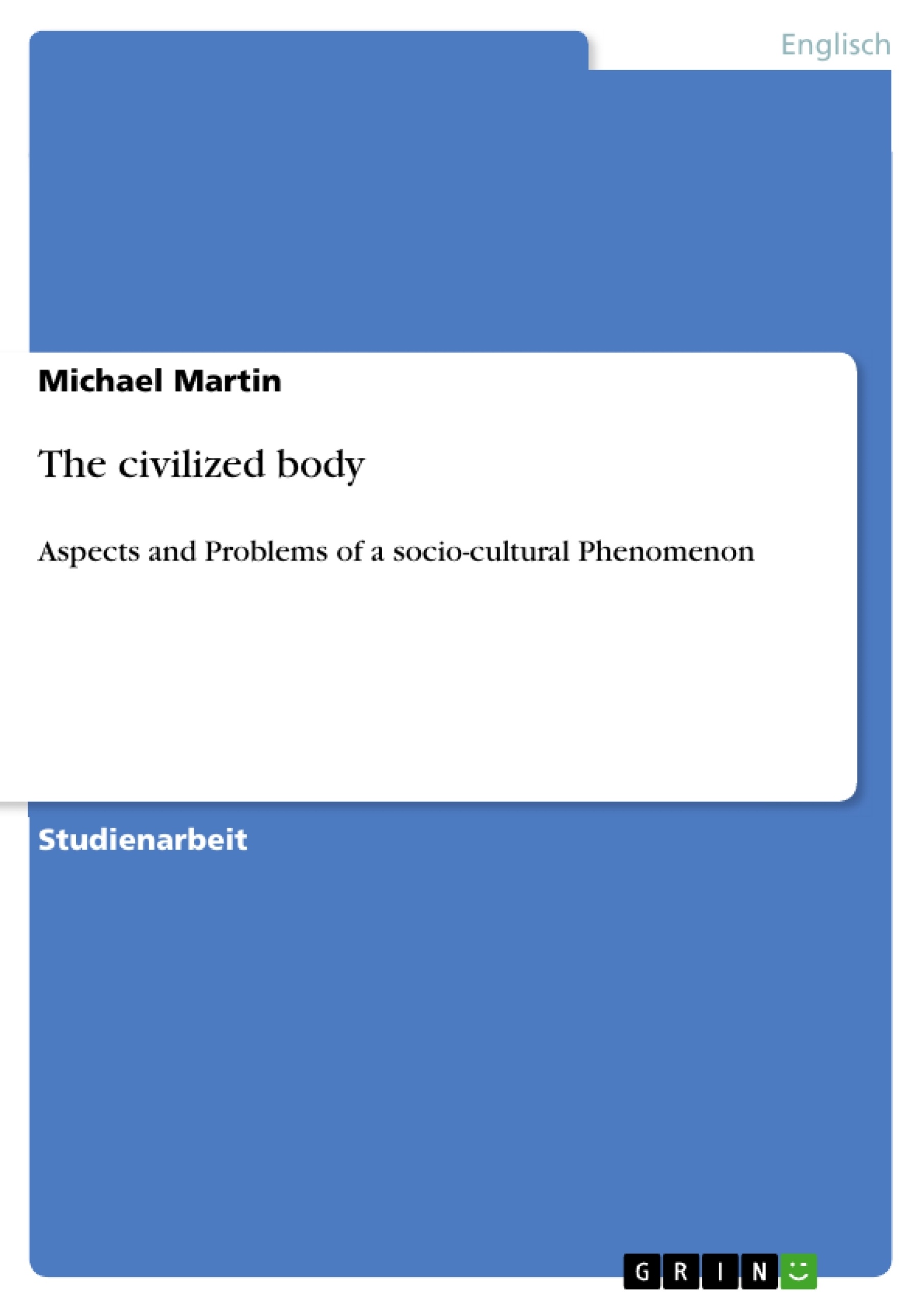When talking about “civilized behavior”, a whole set of associations opens up immediately. We can talk, eat, walk, act and even dress ourselves in a “civilized” manner. But what does civilization actually mean? Are human beings (who, according to a natural- scientific worldview, are actually nothing but mammals) really capable of civilized behavior? An average citizen from a western “civilization” would probably approve of a general distinction between “civilized” and “uncivilized”. The concept of civilization has undergone a massive change. It is now more than just an artificial concept, constructed by sociologists and philosophers. In the modern world of today, being or acting “civilized” does not only entail social norms inside a certain group of people. The concept of civilization has also become a powerful weapon on the political and cultural battlefields of the 21st century.
Most of the time, the self-control of bodily behavior and spontaneous bodily expressions is one of the most important challenges of a human being living in the modern age. It is so important that it has become a central characteristic of humanity – in contrast to other animals, that usually do not control their behavior for constructed social reasons. On the other hand, the processes that are involved in controlling and interpreting the actions of the body are barely noticed – they have become so internalized that we don’t even recognize them anymore. Especially in the western world, meaning is often transported through separation: “I am civilized, because you are not civilized” and so forth. Interestingly, the control of certain modes of behavior (like in the case of eating, personal hygiene or social manners in general) has not always been a natural course of action.
Inhaltsverzeichnis
- Introduction
- 1. Basic developments of the civilized body
- 1.1 The development of eating habits
- 1.2 The development of personal hygiene
- 2. The social construction of shame
- 3. Civilized Bodies in the 21st Century
- Conclusion
Zielsetzung und Themenschwerpunkte
Diese Arbeit untersucht die Entwicklung des "zivilisierten Körpers" in westlichen Gesellschaften. Sie beleuchtet, wie Verhaltensweisen, die einst als natürlich betrachtet wurden, durch gesellschaftliche Normen und Konventionen zu "zivilisiertem" Verhalten umgewandelt wurden. Die Arbeit analysiert die historischen Prozesse, die zu dieser Transformation führten, und betrachtet die Rolle der Selbstkontrolle und der Interpretation von Körperlichkeit im Laufe der Zeit.
- Die Entwicklung von Essgewohnheiten und persönlichen Hygienestandards
- Die soziale Konstruktion von Scham und ihre Auswirkungen auf das Verhalten
- Die Bedeutung von Körperlichkeit in der modernen Gesellschaft, insbesondere im Kontext von Social Media und Cyberkultur
- Die Frage, ob der menschliche Körper tatsächlich "zivilisiert" werden kann
Zusammenfassung der Kapitel
Das erste Kapitel befasst sich mit der Entwicklung von Essgewohnheiten und persönlichen Hygienestandards in westlichen Gesellschaften. Es analysiert, wie die Verwendung von Besteck und die Entwicklung von Tischmanieren zum Ausdruck von Zivilisation wurden. Das zweite Kapitel untersucht die soziale Konstruktion von Scham und ihre Beziehung zur Theorie des Zivilisierungsprozesses. Es wird die Bedeutung von Scham als Mittel der sozialen Kontrolle und der Konstruktion von Normen beleuchtet. Das dritte Kapitel blickt auf die Gegenwart und analysiert die sich entwickelnden Konzepte von Körperlichkeit in der digitalen Welt, wobei die Frage nach der "Zivilisierbarkeit" des menschlichen Körpers im Vordergrund steht.
Schlüsselwörter
Zivilisierter Körper, Essgewohnheiten, persönliche Hygiene, Scham, Zivilisierungsprozess, soziale Kontrolle, Körperlichkeit, digitale Kultur, Social Media.
- Arbeit zitieren
- Michael Martin (Autor:in), 2010, The civilized body, München, GRIN Verlag, https://www.hausarbeiten.de/document/163534


